Introduction
Opal is one of the world’s most beautiful and precious gemstones. It’s predominantly found in Australia, where it was formed over 80 million years ago when an inland sea covered part of the continent.
This gemstone distinguishes itself from others because of its remarkable play of color. As you turn it in your hand, you can see an incredible range of patterns and hues.
It’s one of six types of precious gemstones, along with diamonds, rubies, sapphires, emeralds, and pearls. However, opal is rarer than ruby and emerald, and far rarer than diamond.
In this booklet, you’ll find guidelines to determine opal’s value, characteristics, special considerations, and more.
GLOSSARY OF OPAL APPRAISING TERMS
Opal gemstones are evaluated a little differently than other gemstones. A full description of the differences in approach can be found in our Premium article on opal appraisal. The International Gem Society also features a grading system and glossary of terms unique to opals, detailed in our opal price guide. For the benefit of those interested in purchasing opal, below is a brief explanation of these terms:
OPAL BUYING AND THE 4 CS
Opals can still be evaluated in terms of color, clarity, cut, and carat. However, you’ll find opals have some additional conditions that must be taken into account to properly judge their value.
COLOR
Color is the most import factor for evaluating an opal’s value. The number of colors present, the clarity of colors, the brightness of fire, and the play of color coverage must all be considered.
NUMBER OF COLORS
The more colors visible, the more valuable the opal. Blues and greens are the most common colors. Warm colors (yellow, orange, pink, and red) are less common. As a result, the more warm colors present, the higher the value. Violet and purple are the least common colors in opal. However, they have less effect on value than a hot red or orange.

CLARITY OF COLORS
The clarity of an opal’s colors is evaluated in terms of hue, tone, and saturation. For example, a bright, pure blue is more valuable than a light blue or a greenish blue. Pink is highly valued in opal, but less so than a pure red.
BRIGHTNESS OF FIRE
The brightness of an opal’s fire or play of colors is graded on a scale of 1 to 5.

COVERAGE
This is one of the unique elements of an opal’s coloration. Coverage refers to the amount of surface showing play of color. Ideally, the entire crown of the gem should show fire. The less area covered, the lower the value. Centering is also important. To get the highest value, the best play of color should be centered. Opals with their best play of color to the sides or offcentered are less valuable.
This 15.5carat double cabochon opal has a flash of colors across its entire face.
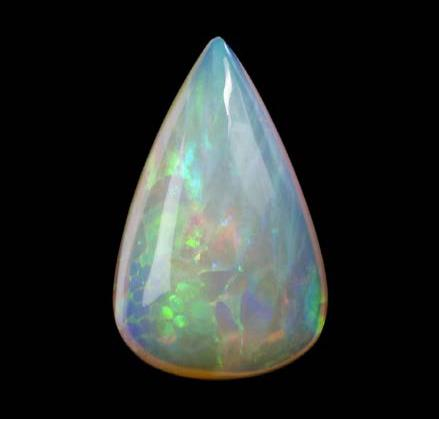
For example, in the image below, the colors are dull towards the top and strong on the lower left. Since approximately a third of the stone has poor fire, the opal’s color grade would be reduced considerably.
CLARITY (IMPERFECTIONS)
True inclusions in opals include sand, non-opal spots, healed fractures, chips, webbing or fine strands of potch or sandstone between the areas of color, and fractures. Their effect on value is in direct relationship to their effect on the appearance of the gem. Fine black potch webbing between the color zones is of small consequence. Sand on a black opal, or black potch showing through a layer of light opal, are very unsightly and reduce value considerably.
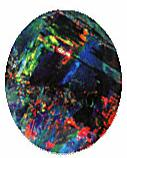
Matrix is the host rock on which the opal is found. While not truly an inclusion, it has the same effect on value when it appears on the surface of the gem.
Since opals are delicate, fractures will reduce their value to nearly nothing. Cracked opals are not suitable for jewelry. If a fractured stone can be recut, its value is that of rough (about 10% to 25% of its normal value) .Shallow crazing (surface cracks) can sometimes be filled. If the results are invisible, it will only make a small deduction in value.
CUT
The ideal cut for an opal is a high dome with even proportions, but few opals allow for this shape. Most are thin, which has little effect on value. The quality of polish should be very good to excellent in all the higher grades.
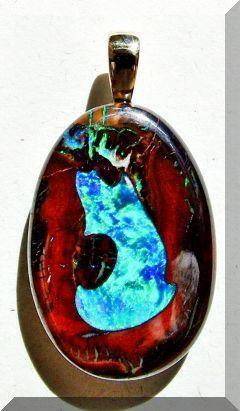
Value decreases when the opal is very thin or excessively thick. (While a high dome is preferred, excessively thick refers to a stone with a high dome but only a thin fire bar). Any material in excess of normal proportions would be deducted from the value.
An uneven cut will lower an opal’s value. Like all cabochons, opals should be symmetrical when viewed from the sides and ends. The more uneven the symmetry (viewed from the sides and ends, not the top), the lower the cut grade.
Symmetry doesn’t affect the value of an opal carving. For carved stones, the overall effect of the carving is what influences their value.
As a rule, standard shapes are preferred to free forms. Most high-end opals are cut free form to preserve weight, so this is a small factor, but it becomes more important on lower grade stones.
Nevertheless, some free form opals have such distinctive shapes that their value increases. For example, an opal cut in the shape of a butterfly would be special. Matched pairs that can be used for earrings are in high demand.
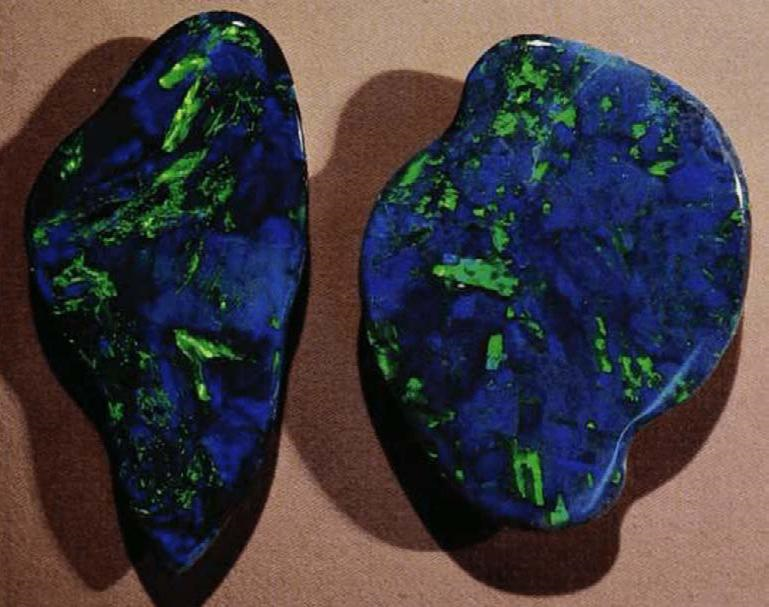
CARAT
Although opal size does affect value, large opal stones don’t command as high a price as midsize stones. The highest values go to gems between five and ten carats.
While factors like the above 4 Cs have a great impact on opal value, there are others with significant effects. These will sometimes make the difference on whether a gem grade is higher or lower.
DIRECTIONALITY
The play of color seen in an opal depends on the viewing angle. This directionality of flashes is a unique consideration for opals and is one of the most important factors in an opal’s value. It’s also one of the most difficult to judge. Ideally, the viewer should see bright attractive patterns from every direction. Patterns that add significant value should be visible from a wide range of vision. If a viewer has to orient an opal in one precise position to see the effect, the value of the pattern is minimized. (For information on patterns and value, see below)
CHARACTER
Some opals are described as having character, which means their appeal is far greater than others of the same technical standard. Every person sees opal in their own way. An inexpensive stone can often have great personal appeal.
Professional graders shouldn’t let their own personalities affect their evaluation of opal. Although every opal is unique, it should be graded on standard factors rather than its emotional appeal.
On the other hand, consumers may see higher or lower value in an opal than its professional grade may indicate. This is a strictly personal consideration. As long as buyers understand the technical evaluation, prices are subject to negotiation.
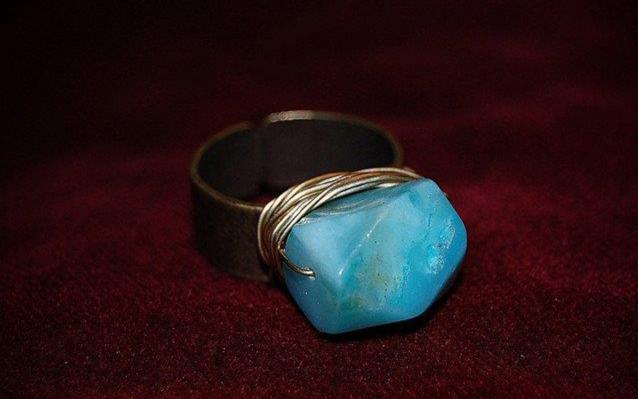
PATTERNS
In general, pinfire and small-type patterns add less value to opals than broad patterns or large flashes. If the broad patches are in hot colors, the value increases even more.
Distinct patterns such as rolling fire, straw, Chinese writing, ribbon, and harlequin are very rare. Opals with these effects are considered collector’s items. Picture stones, especially if they resemble a known site, are the most valued of all. These patterns raise the value of an opal considerably. Their presence is often enough to raise a gem to the next higher category.

THE OPAL’S FACE
Keep in mind that some opals are cut so they have a “front” and “back.” It is the “face-up” value of opal that is graded. The condition of the back, which may be unpolished or have inclusions, isn’t factored into its grade or value.
Crystal opals show their play of color best when viewed against a dark background. That is how they should be evaluated. When used for jewelry, they are often set in black cement. This has no effect on their grade.
Some black crystal opals show windows, areas of high transparency, when viewed against a light background. It is their face-up value, against a dark background, that is used for grading.
BOULDER AND MATRIX OPALS
These stones have their own value structure. However, the basic ingredients of color, directionality, cut, and imperfections apply to these gems as well. In addition, the percentage amount of precious opal in the matrix affects the value of the gem. For example, a Yowah nut with 50% of the surface covered in precious opal is far more valuable than one with just 20% coverage. The pattern created by the intermixing of the matrix and opal also affects value. Higher values go to the more interesting patterns.
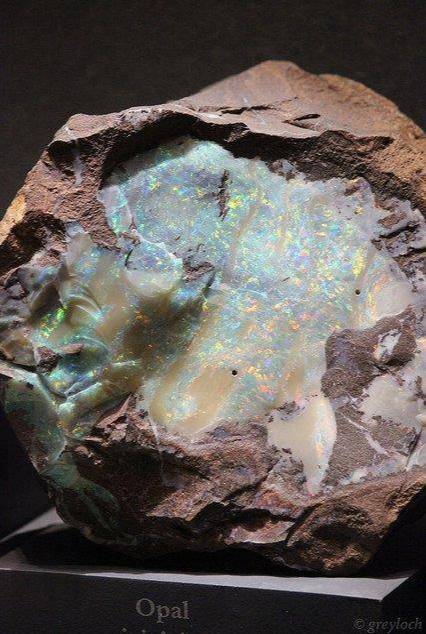
COMPOSITE (ASSEMBLED) OPALS
Doublets are usually priced at 15% to 35% of the value of similar looking natural opal gems. However, they occasionally run as high as 50% of the value of a natural opal if they are of exceptional quality. Triplets are usually about 1% of the value of an equivalent natural and peak at about $500.
TREATMENTS AND ENHANCEMENTS
For information on synthetic and simulated opals and opal treatments consult our opal gem listing.
CARE
Opals are delicate and very sensitive to shocks and changes in temperature. However, with the appropriate care and jewelry settings, opal jewelry can be worn for many occasions.
Donald Clark, CSM founded the Inter national Gem Society in 1998. Donald started in the gem and jewelry industry in 1976. He received his formal gemology training from the Gemological Institute of America (GIA) and the American Society of Gemcutters (ASG). The letters «CSM» after his name stood for Certified Supreme Master Gemcutter, a designation of Wykoff’s ASG which has often been referred to as the doctorate of gem cutting. The American Society of Gemcutters only had 54 people reach this level. Along with dozens of articles for leading trade magazines, Donald authored the book -Donald Clark, CSM IMG «Modern Faceting, the Easy Way.»
